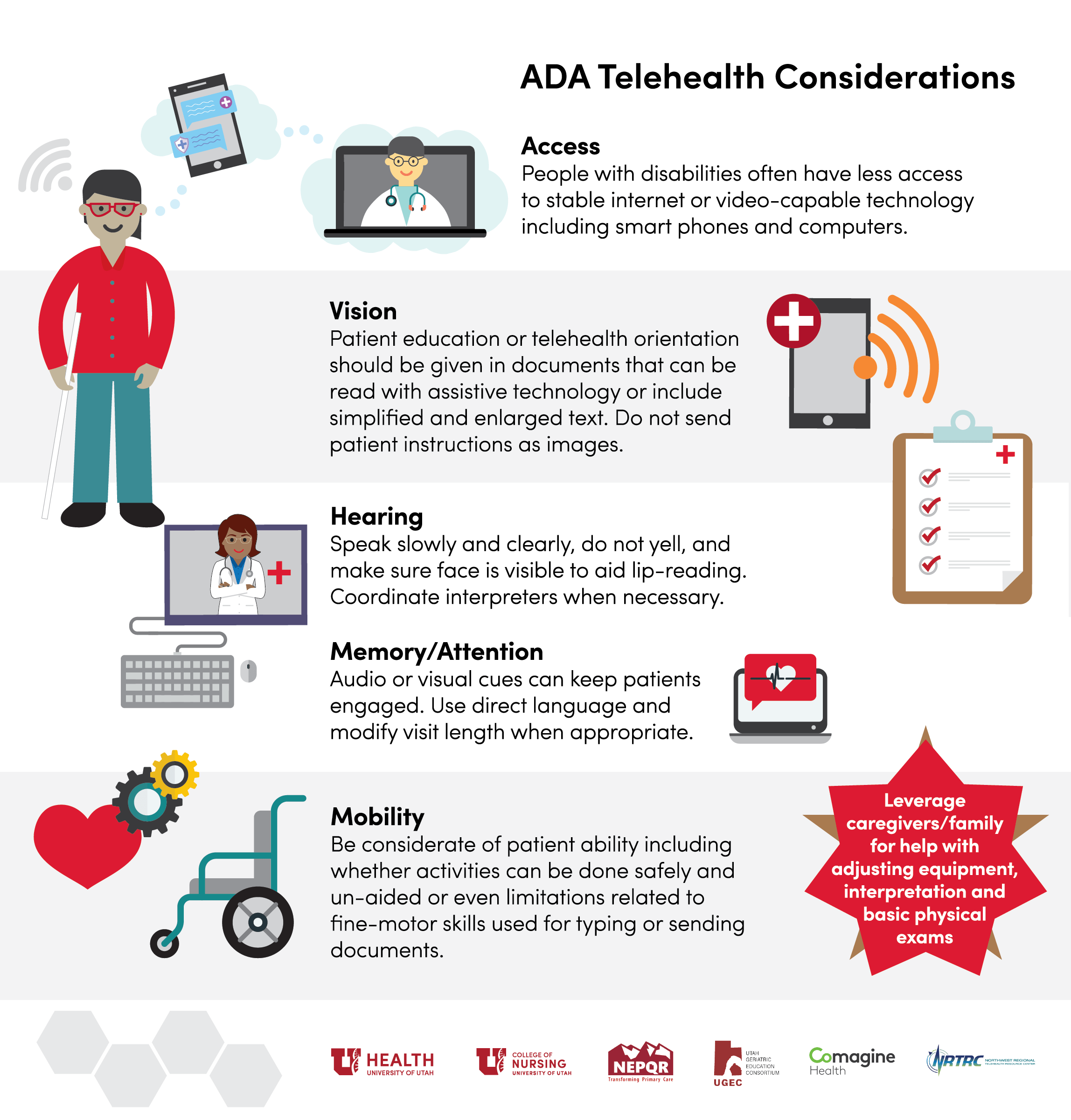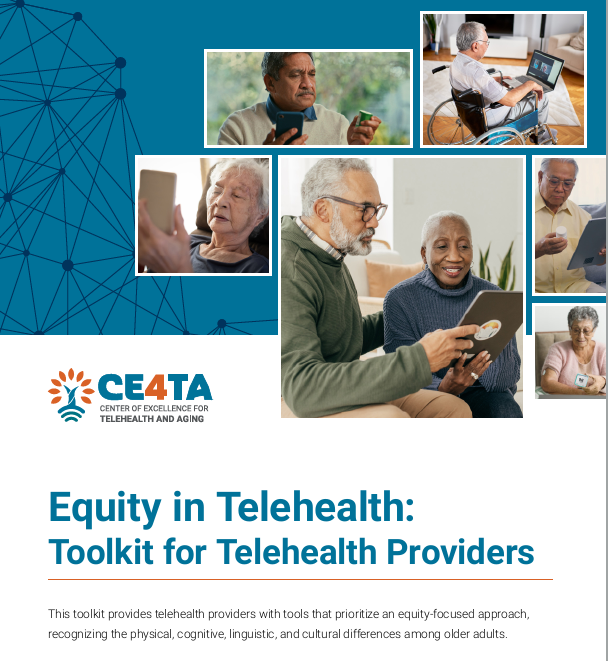Significant challenges exist for patients with disabilities when it comes to accessing both in-person and remote healthcare. In particular, barriers to communication access prevent patients with disabilities from utilizing telehealth to its fullest extent. The U.S. Department of Health & Human Services Office for Civil Rights (OCR) and the U.S. Department of Justice Civil Rights Division recently issued Guidance on Nondiscrimination in Telehealth: Federal Protections to Ensure Accessibility to People with Disabilities and Limited English Proficient Persons.
Earlier this year, OCR finalized amendments to their rule prohibiting discrimination on the basis of disability titled Nondiscrimination on the Basis of Disability in Programs or Activities Receiving Federal Financial Assistance.
OCR offers the following Disability Resources for Effective Communication
- What are specific considerations for patients/clients with disabilities? Here is a nice graphic developed by the Northwest Regional TRC that answers this question:

Additionally, the National Consortium of Telehealth Resource Center has put together this fact sheet: Telehealth & Disability: Recommendations for Providers
Finally, through our Center of Excellence for Telehealth and Aging we have made available this Equity in Telehealth: Toolkit for Telehealth Providers developed by the West Health Institute (search by this title in the resource library).

- What kind of auxiliary aids and services are required by the ADA to ensure effective communication with individuals with hearing or vision impairments? The ADA National Network has compiled a really nice list of appropriate auxiliary aids and services.
-
- iCanConnect, also known as the National Deaf-Blind Equipment Distribution Program (NDBEDP), was established by the Federal Communications Commission (FCC). iCanConnect provides free equipment including smartphones, tablets, computers, screen readers, braille displays, and more to people who meet federal disability and income guidelines.
-
- National Assistive Technology Act Technical Assistance and Training (AT3) Center is your one-stop connection to information about the Assistive Technology Act, State Assistive Technology Programs, and general assistive technology and has this Program Directory of State Assistive Technology Programs.
-
- The Association of Medical Professionals with Hearing Losses has an excellent Stethoscope Comparison Table designed for deaf and hard-of-hearing healthcare professionals.
- How do HIPAA and the Privacy Rule intersect with accessibility services?
- Is a certified Telecommunications Relay Service, when used to contact patients with hearing or speech impairments, a business associate of the doctor? Under the Privacy Rule, a covered entity such as a doctor can contact a patient using a Telecommunications Relay Service (TRS), without the need for a business associate contract with the TRS. Read more here...
- Are there best practices for working with patients who have intellectual or developmental disabilities (I/DD)? As telehealth becomes a regular part of health care, providers may find that their approach needs to vary depending on the patient’s needs. When caring for a patient with an intellectual or developmental disability (I/DD), a few additional steps can help ensure the visit is effective and comfortable. CCHP, through funding from the WITH Foundation has created several resources for the Intellectually/Developmentally Disabled (I/DD) community:
Learning About Using Telehealth (for Patients with I/DD) / Access Spanish Language Version
Your Telehealth Visit (for Patients with I/DD) / Access Spanish Language Version
- Are there best practices for working with deaf or hard of hearing patients?
-
- The National Association of the Deaf has developed the following resources during the COVID-19 Public Health Emergency:
-
- The North Carolina Department of Health and Human Services has created this outstanding collection of resources:
- Are there any examples of these best practices?
-
- The National Consortium of Telehealth Resource Centers hosted the following webinars:
- "Can You Hear Me? Equitable Access To Telehealth For Deaf, Hard Of Hearing, And Deaf-Blind Patients". This webinar guides you through real-life scenarios, showcasing effective communication strategies (as well as not-so successful ones)
- The National Consortium of Telehealth Resource Centers hosted the following webinars:
-
-
- "Building Accessible Telehealth For Patients With Disabilities From The Ground Up". This webinar features two operational case studies of how telehealth was successfully implemented for those with disabilities.
-
-
- Harborview Behavioral Health Institute has free training.
- The "Telebehavioral Health 401 Training Series" has a course module on How to Support People with Disabilities.
- Harborview Behavioral Health Institute has free training.
Additional Disability Resources
- The ADA National Network consists of 10 regional ADA Centers and an ADA Knowledge Translation Center to provide local assistance and foster implementation of the ADA. If you need further assistance, you are encouraged to Contact your ADA Center!
- The ADA National Network has a nice article on Telehealth and Federal Disability Laws

